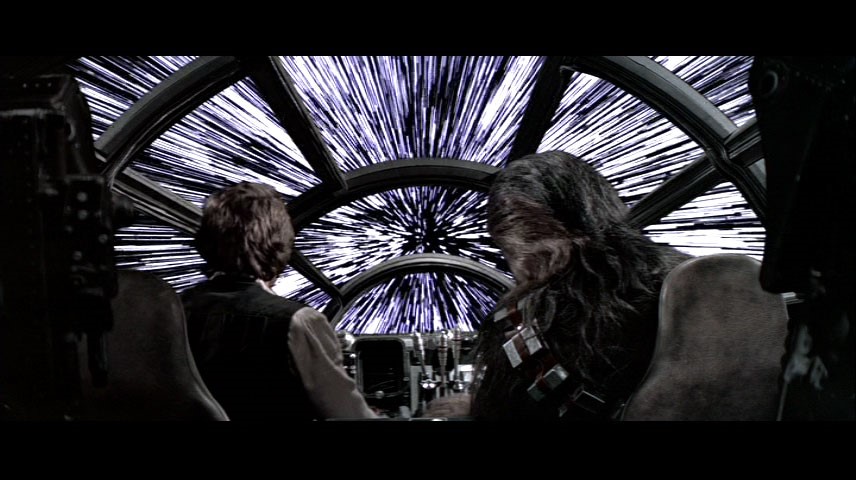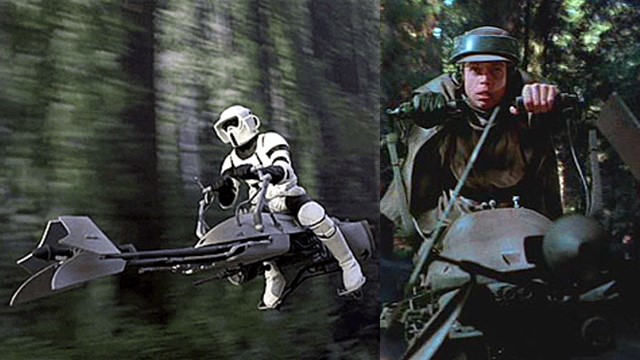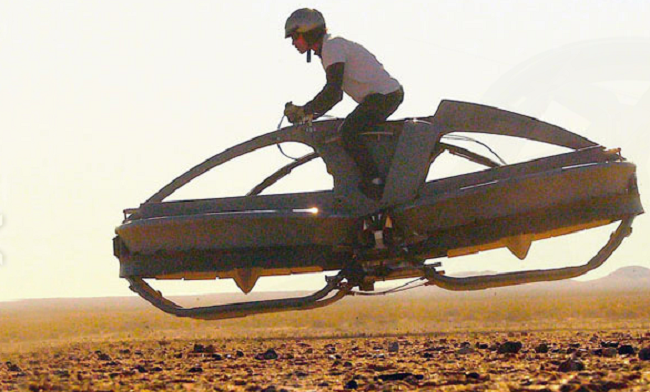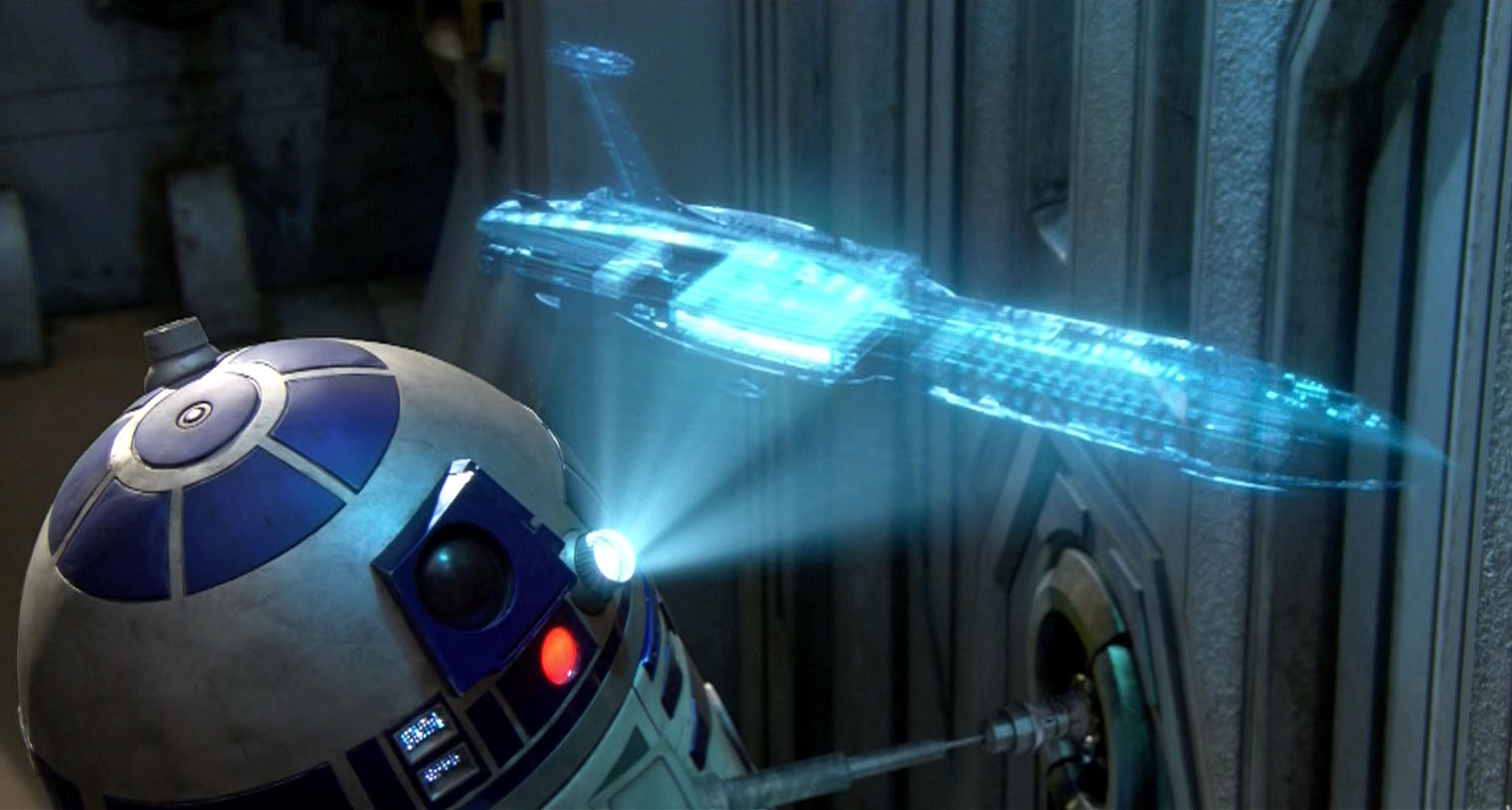Exoplanets
Like many space operas, the setting of Star Wars spans across multiple planets, but it was not until 1995 that we detected our first exoplanets — 18 years after the original film was first released. In the 20 years that followed, we’ve detected more than 2,000 exoplanets, including the 2011 discovery of the first planet to be orbiting a binary star, just like Star Wars ’ renowned desert planet, Tatooine. Unfortunately, Kepler-16b, as this particular planet is called, is neither desert nor solid.

In 2014, astronomers identified Kepler-186f, a new planet that’s roughly the size of Earth and orbits a star at a distance capable of supporting life. The discovery was heralded by Paul Hertz, director of NASA's Astrophysics Division, as “a significant step toward finding worlds like our planet Earth,” in other words, the first step toward establishing a galactic trade federation.

Hyperspace
You can’t run a galactic empire without faster-than-light (FTL) travel; how else are you going to squash rebellions taking place tens of thousands of light years away? In Star Wars, the type of propulsion that made this possible is lauded as hyperdrive, a form of warp drive that bridges two points in real time through a tunnel called “hyperspace.” It’s real-life equivalent simply doesn’t exist, and most likely will not for another 50 to 300 years, or however long it takes to establish a reliable source of anti-matter, the powerful “negative energy” that could make such long-distance traversals possible without occupying massive amounts of space.

While warp drive technology remains completely speculative, some headway has made in the underlying research. One of the leading proposals suggests that Alcubierre’s theory may hold the key. Alcubierre’s theory proposes that a spacecraft can travel wide distances by creating a warp bubble that compresses the space in the front of the vessel while simultaneously expanding the space behind it to cause space-time to move around the ship and reposition it further along the space-time course without actually moving it.
Another possibility would be to create an actual wormhole using an up-scaled version of the Casimir effect – the force of attraction or repulsion between two parallel mirrors within a vacuum. This particular experiment has already been verified in the lab, using a minuscule distance.
Speeders
What’s Star Wars without speederbikes? As everyone familiar with the film franchise knows, speeders are one the primary modes of terrestrial transportation, though I’d wager that they’re technically hoverbikes. This means that the California-based Aerofex already has a leg up, as its in process of finalizing its Aero-X hovercraft .

Described as a “hovercraft that rides like a motorcycle,” Aero-X can zoom at up to 45 mph (72 km/h) at a height of 10 feet (3 meters) off the ground. Its UK counterpart, Malloy Aeronautics, is building a hoverbike that's able reach speeds of up 170 mph (274 km/h).

Droids
Robotic companion/servants like robots R2D2 and C-3PO are not as far off as we imagine, with a number of robotic solutions available for a multitude of tasks. These may not function as the jack-of-trade robots exhibited in Star Wars (with questionable AI), but many are suited for a large variety of tasks. For example, robotic companions like CHiP (Canine Home Intelligent Pet) exist for those who wish to compartmentalize feelings of friendship and tenderness. And on the other side of the spectrum, you have robots that aid with physical endeavors such as the firefighting TAF 20 , the garbage collecting ROAR , autonomous flying robots , and robots that teach programming, like Codie . Someday we may consolidate all these functions into a single autonomous Star Wars-like entity.

Lightsabers
There’s no way we could discuss Star Wars tech without mentioning the iconic lightsaber, the energy sword used by both peacekeeping Jedi and their dark-side counterparts, the Sith. We’ve already touched on subject in great detail in recent article, suggesting that the closest thing to a modern equivalent of the lightsaber is the plasma arc cutter, a device that electrifies plasma gas using high voltage current to create a high-thermal energy cutter capable of melting metal.

But this is no lightsaber. For one, the plasma “beam'” is nowhere near the 50-inch length of the lightsaber, but rather a few inches in length. Secondly, we’d don’t have the compact power source needed for a mobile cutter — even the hand-held variety are connected to heaps of electronics.
Holograms
In the age of intergalactic space travel, electromagnetically contained laser swords, and existential telekinesis, the most efficient form of communication is obviously engaged through holographically-projected images of the person you’re speaking to, because as you know, the best way to simulate a face-to-face conversation is by standing in place and watching a hologram. At least that’s Star Wars ’ take on it. So, how are we doing in the holographic department?

The first static hologram was invented in the 1940’s by electrical engineer and physicist Dennis Gabor as a means of improving the resolution of electronic microscopy. Gabor demonstrated that it’s possible to reconstruct an object’s original light field to produce a static 3D image by illuminating the object with an electron beam and interfering the scattered light with another beam to create encoded interference fringes, which, when illuminated with the same source, simultaneously scatters light from all fringes and interferes with itself. He eventually won a Nobel prize in physics for this in 1971.
But how are we doing in the animated holographic front? There’s some headway here and there, but for the most part, there’s way more room for improvement.
Dr. Ben Long and colleagues Professor Sriram Subramanian, Sue Ann Seah, and Tom Carter from the University of Bristol's Department of Computer Science are devising a way of using ultrasound wave to produce floating 3D shapes with tactile feedback as a way to feel the projected-object’s unique properties. The team envision the technology as an enabler of hands-on diagnosis, allowing doctors to feel out the unique shape and contour of tumors or areas of weakness, or as a method by which users can explore museum artifacts without actually touching the object.
In a separate example, a Japanese company called Aerial Burton suspended bright voxels midair by ionizing air with laser and generating a floating hot plasma — which in turn — emitted glowing photons that emulated the appearance of a hologram.

True Star Wars -esque holographics are years away, requiring about a million-trillion pixels to accurately recreate the 3D diagram. Considering the vast graphical processing power needed to run 4K video games, we’re looking at a couple of decades at the very least before we have the technology necessary to record the all the complex information stored within the light field, communication tech capable of transmitting this much data, and the computer needed to process it. Recall that holograms, by definition, seek to capture and recreate all the light-field information from every viewing angle – youch!
In the meantime, we’ll have to settle for elaborate trickery like the “pepper’s ghost illusion ” that was used to project a “holographic” Tupac Shakur during the 2012 Coachella music festival. This “hologram” isn’t actually a hologram, but a trick of light created by placing a sheet of glass at an angle between the audience and an adjacently standing actor, then using the stage to reflect light from the actor while still enabling them to see through the stage ahead, produced an onstage illusion; literally, smoke and mirrors if you will.
Source: Electronic Products and Livescience
Advertisement
Learn more about Electronic Products Magazine





